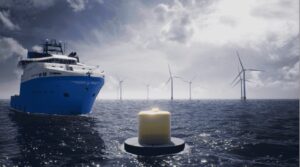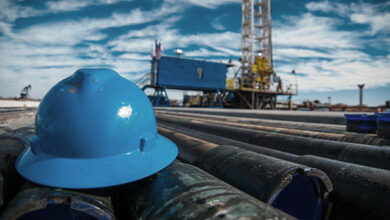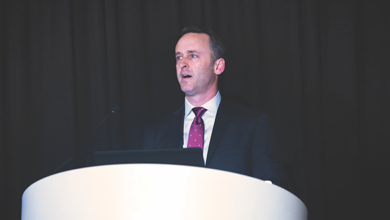Environment, Social and Governance
Maersk Drilling sets target to halve emissions by 2030
Maersk Drilling has set a target of lowering the intensity of CO2 emissions from its drilling operations by 50% by 2030. The target is part of an overall sustainability strategy and is supported by the company’s focus on efficiency gains, which also leads to reduced CO2 emissions.
Initiatives so far include the first rig to operate onshore power and the upgrade of two of the world’s largest jackups to hybrid, low-emission rigs. In addition, Maersk Drilling recently announced that it has joined a consortium that is working to mature one of the most progressed CO2 storage projects in Denmark.
Maersk Drilling’s emissions reduction target is in line with most oil and gas companies’ 2030 targets and supports the ambitions of the Paris Agreement.
Approximately half the target can be achieved via further efficiency gains and known technical solutions and concepts, the company estimates. The other half will be facilitated by investments in innovation. The target will be measured as tonnes CO2 emissions relative to three parameters: contracted days, drilled meter, and revenue, compared with 2019 as the baseline year.
In addition to the emissions reductions target, Maersk Drilling’s sustainability strategy contains initiatives within a range of areas, including a target of increasing the share of onshore women leaders to 30% across all leadership levels.
DNV GL: Deep decarbonization of energy system still far away
While decarbonization is rising rapidly up the agenda of industries and governments around the world, CO2 emissions from energy use will fall by just 15% by 2035, before then dropping by 40% by 2050. The forecast, from DNV GL’s Energy Transition Outlook 2020, also predicts the oil and gas industry will account for more than 80% of world energy-related carbon emissions in 2050.
The energy transition is still nowhere near fast enough to deliver on the COP 21 Paris Agreement, according to the report.
Commitments made by oil and gas companies indicate that emissions reductions in the short term will come largely from efforts to decarbonize oil and gas production. Solutions include electrifying oil and gas assets, reducing flaring and venting of gas during production, increased efforts to detect and stem methane leaks, and efficiency gains through digitalization. However, oil and gas production and distribution accounts for only a quarter of the industry’s carbon emissions; the majority occurs during the combustion of oil and gas.
In 2050, DNV GL expects that the industry will broadly not be measured on carbon emissions per barrel of oil or gas it has produced, as is the default today. Instead, it will be measured by lifecycle emissions per barrel of oil or gas consumed. This includes so-called “scope 3 emissions,” which include all emissions from combustion or use of oil and gas products. DNV GL notes that there are limited options to reduce emissions from oil consumption, but natural gas consumption can be decarbonized by deploying carbon capture storage technology.
Precision Drilling outlines ESG performance in new report
Precision Drilling released its 2020 Corporate Responsibility Report in September detailing its ESG initiatives and social/community involvement. Through equipment and process standardization and scalable application of digital technologes, Precision’s operations deliver consistency, reliability and efficiency. Not only does this lower costs for customers, but it also enables the company to minimize its environmental impact.
Key highlights from the report show that the company:
- Invested in its Super Series Rigs and Alpha technologies to support continued reductions in operating costs, the environmental footprint and greenhouse gas emissions;
- Received Hitachi’s Data Insights Optimization Award for increasing efficiencies and reducing the company’s environmental footprint;
- Participated in partnerships aimed at sustainable emission-free energy alternatives, including a geothermal technology project;
- Continued its focus on the health and safety of personnel and stakeholders; and
- Supported an inclusive workplace that provides equal opportunity to all staff.
New electrical charging buoy aims to reduce offshore vessel emissions

Maersk Supply Service and Ørsted, a Danish power company, will jointly test a new charging buoy that the companies believe could potentially displace a significant amount of marine fuel used today. The buoy would act both as a safe mooring point and a charging station for smaller battery- or hybrid-electrical vessels and to supply power to large vessels. This could potentially enable them to turn off their engines when laying idle. Virtually all emissions would be eliminated while the buoy is in use, the companies say.
Upon technical validation and commercial ramp-up, the electrical charging buoy has significant potential to contribute positively to reduce emissions for the maritime industry, they added. The buoy is scheduled to be tested in the second half of 2021, initially in a wind farm application.
Schlumberger to create geothermal company
Schlumberger New Energy, a new Schlumberger business, and Thermal Energy Partners have agreed to create GeoFrame Energy, a geothermal project development company. GeoFrame Energy will leverage its partners’ expertise to develop efficient and profitable geothermal power generation projects, providing an opportunity to support a reliable supply of clean energy.
The company’s first project is the 10-MW Nevis Geothermal Power Project on the Caribbean island of Nevis, which will enable the island to transition to 100% zero-emission renewable energy for its power supply.




